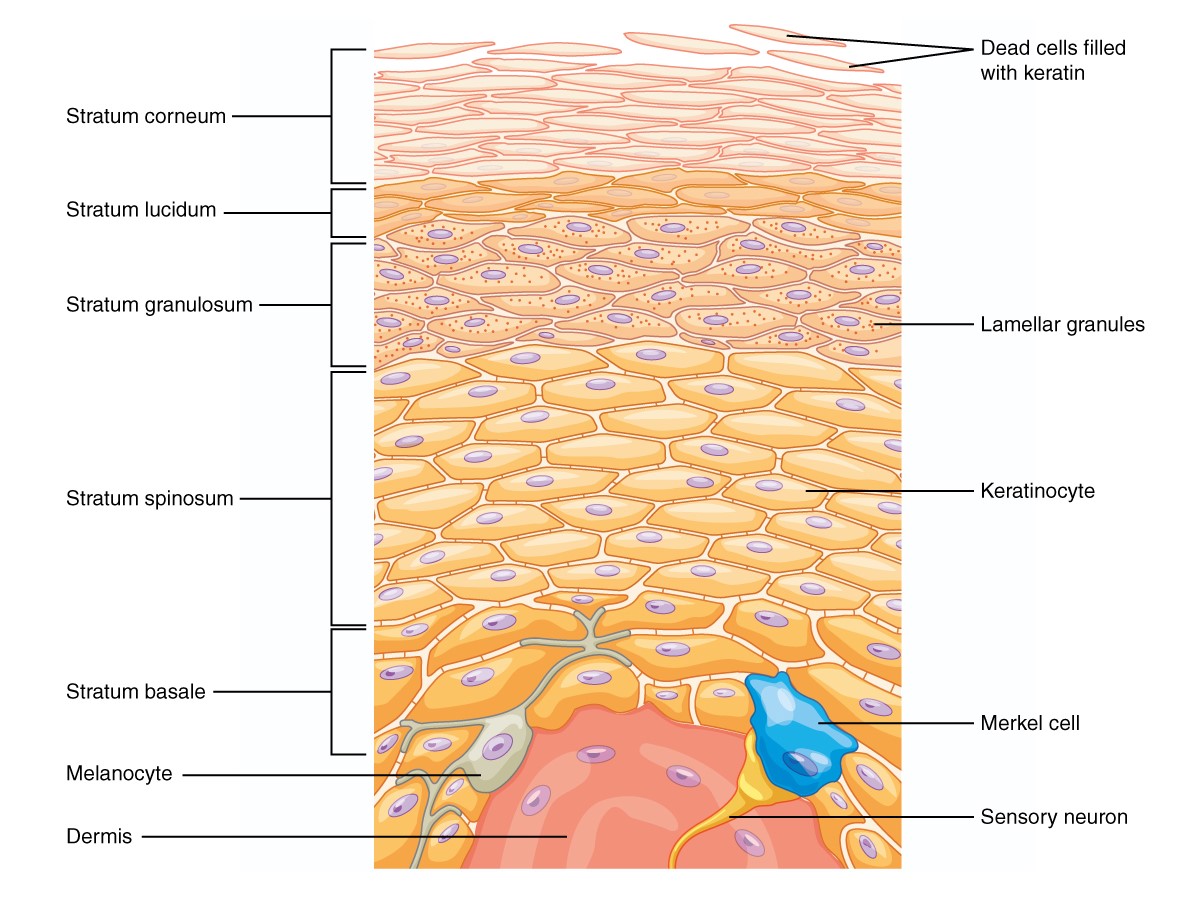Playlist
Show Playlist
Hide Playlist
Derivatives of the Skin: Nails
-
Slides Derivatives of the Skin Nails.pdf
-
Download Lecture Overview
00:01 The last one is the nails. 00:03 One of the skin appendages. 00:06 So how do we classify the different types of the nail? You've got the nail plate, which is the hard part that we clip all the time. 00:14 The lunula which is the white part proximally. 00:17 Not everybody has this, but it shows the distal part of the matrix, which is where the nail grows from. 00:26 Then there is the cuticle, which is that layer that protects the skin, our nails, from infections. I know that some people, when they do their manicure they actually remove this layer. It's actually not proper to do that because you're opening up for invasion by bacteria. So that's the cuticle. 00:42 And then just beneath the cuticle that's the area called the proximal nail fold. 00:47 You also have the lateral nail fold or lateral nail groove left and right and the distal nail groove. 00:53 When you have fungal infection the fungal infection can affect any of these areas of the nails. Again we have melanocytes in the matrix of the nail where the nail grows from. 01:04 And you can get this pigmentation, which can be benign. 01:08 But of course, sometimes it's difficult to differentiate from someone who's got subungual melanoma, which is a much more serious condition, which needs to be picked up daily. But as you can see on the picture on the right, this shows a picture of subungual melanoma. 01:26 And this is because the melanocytes in the matrix, which is the area where the nail grows from, they have changed to become malignant. 01:36 And they have melanoma. 01:38 And sometimes difficult to differentiate between benign melanonychia and subungual melanoma. It takes experience. 01:45 And sometimes you may have to do a biopsy, but you can see that the pigmentation is going right down up into the proximal nail fold and the bit of the cuticle. 01:55 So that is a sign, a clue that one is probably dealing with melanoma, not benign melanonychia. But of course other investigations would need to be done to confirm the diagnosis.
About the Lecture
The lecture Derivatives of the Skin: Nails by Ncoza Dlova is from the course Introduction to Dermatology.
Included Quiz Questions
Which statement is TRUE regarding subungal melanoma?
- It can present with pigmentation that extends to the proximal nail fold.
- It causes a thickening of the nail plate without any pigmentation.
- It is commonly found on the soles of the feet, not under the nails.
- It results from a bacterial infection causing nail discoloration.
- It always presents with a painless lesion under the nail.
Customer reviews
5,0 of 5 stars
| 5 Stars |
|
5 |
| 4 Stars |
|
0 |
| 3 Stars |
|
0 |
| 2 Stars |
|
0 |
| 1 Star |
|
0 |




